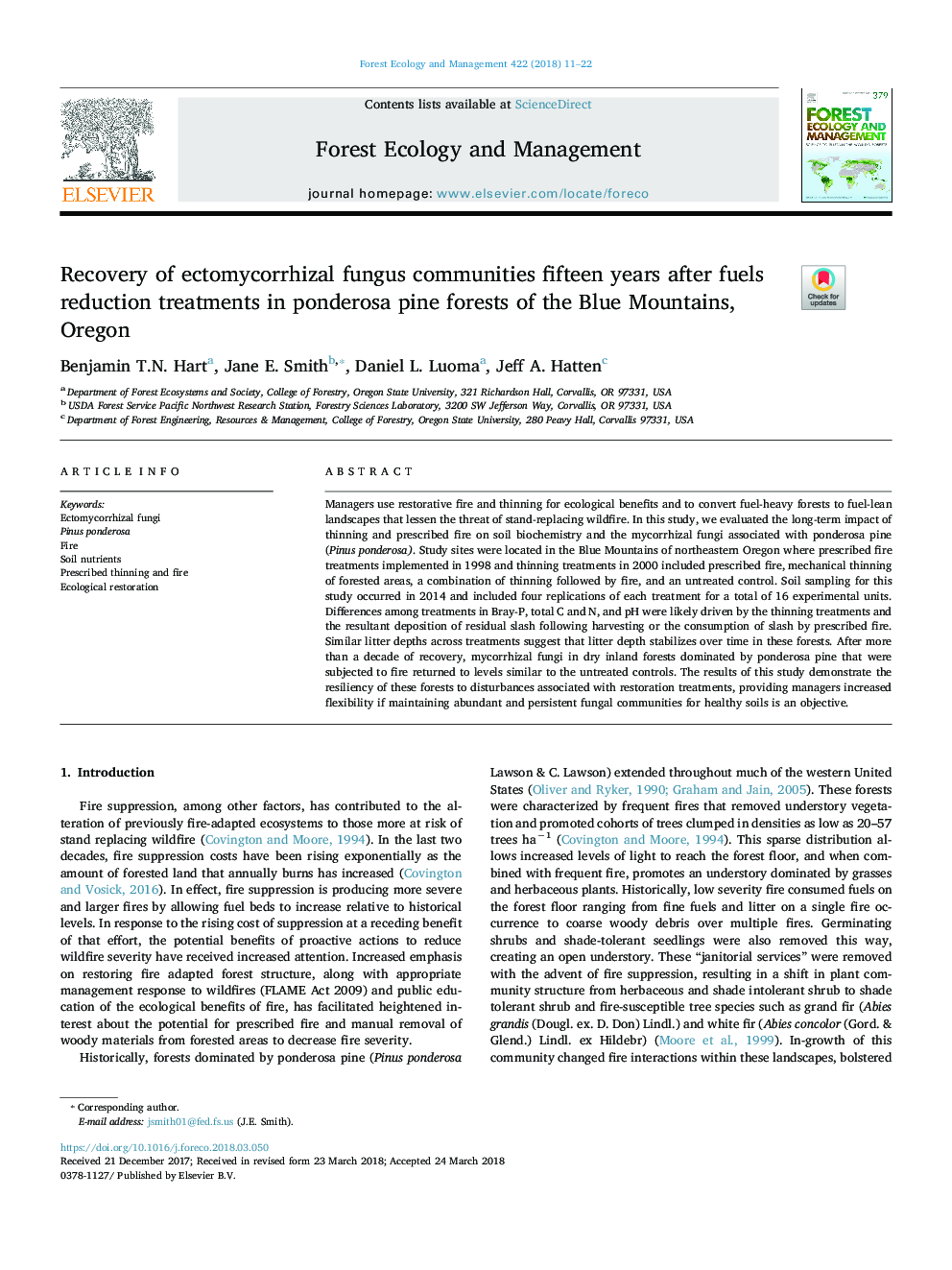| Article ID | Journal | Published Year | Pages | File Type |
|---|---|---|---|---|
| 6541647 | Forest Ecology and Management | 2018 | 12 Pages |
Abstract
Managers use restorative fire and thinning for ecological benefits and to convert fuel-heavy forests to fuel-lean landscapes that lessen the threat of stand-replacing wildfire. In this study, we evaluated the long-term impact of thinning and prescribed fire on soil biochemistry and the mycorrhizal fungi associated with ponderosa pine (Pinus ponderosa). Study sites were located in the Blue Mountains of northeastern Oregon where prescribed fire treatments implemented in 1998 and thinning treatments in 2000 included prescribed fire, mechanical thinning of forested areas, a combination of thinning followed by fire, and an untreated control. Soil sampling for this study occurred in 2014 and included four replications of each treatment for a total of 16 experimental units. Differences among treatments in Bray-P, total C and N, and pH were likely driven by the thinning treatments and the resultant deposition of residual slash following harvesting or the consumption of slash by prescribed fire. Similar litter depths across treatments suggest that litter depth stabilizes over time in these forests. After more than a decade of recovery, mycorrhizal fungi in dry inland forests dominated by ponderosa pine that were subjected to fire returned to levels similar to the untreated controls. The results of this study demonstrate the resiliency of these forests to disturbances associated with restoration treatments, providing managers increased flexibility if maintaining abundant and persistent fungal communities for healthy soils is an objective.
Related Topics
Life Sciences
Agricultural and Biological Sciences
Ecology, Evolution, Behavior and Systematics
Authors
Benjamin T.N. Hart, Jane E. Smith, Daniel L. Luoma, Jeff A. Hatten,
